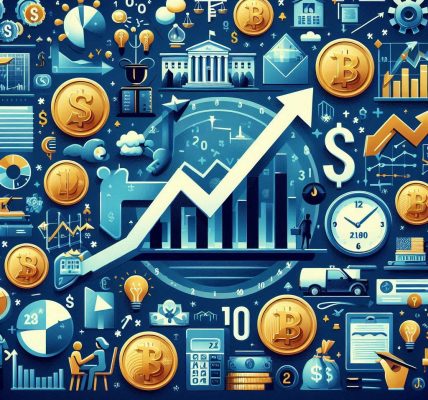Introduction
A global recession is one of the most feared economic downturns, affecting businesses, governments, and individuals alike. Understanding recession risks and predicting future downturns can help businesses and policymakers prepare for economic uncertainty. By analyzing key economic indicators, experts can assess the likelihood of a recession before it happens. This blog explores the warning signs of a global recession and how economic indicators provide valuable insights into future economic trends.
What is a Global Recession?
A global recession is defined as a prolonged period of economic decline across multiple countries, typically measured by a decrease in Gross Domestic Product (GDP) for at least two consecutive quarters. A global recession leads to higher unemployment, reduced consumer spending, and overall economic instability. Organizations like the International Monetary Fund (IMF) and the World Bank monitor global economic trends to assess potential risks.
Key Characteristics of a Global Recession:
- Decline in GDP – Negative economic growth for consecutive quarters.
- High Unemployment Rates – Job losses across various industries.
- Decreased Consumer Spending – Reduction in purchasing power and spending habits.
- Falling Stock Markets – A decline in investor confidence and market performance.
- Reduced Business Investments – Companies cut back on expansion and hiring.
Major Economic Indicators Predicting a Global Recession
Economic indicators provide critical insights into the health of an economy. These indicators help policymakers, investors, and businesses anticipate and prepare for potential downturns.
1. Gross Domestic Product (GDP) Growth Rate
GDP measures the total economic output of a country. A sharp decline in GDP growth is one of the strongest signals of a potential recession. Economists monitor GDP trends to determine whether an economy is slowing down.
- Example: If the U.S. GDP contracts for two consecutive quarters, it signals an economic downturn.
2. Unemployment Rate
A rising unemployment rate often precedes a recession. When businesses cut jobs, consumer spending declines, leading to lower economic growth.
- Example: The 2008 financial crisis saw a significant rise in unemployment as companies reduced their workforce to cut costs.
3. Inflation and Deflation Trends
Extreme inflation (rising prices) or deflation (falling prices) can be warning signs of economic trouble. Central banks, such as the Federal Reserve, use monetary policies to manage inflation and economic stability.
- Example: Hyperinflation in Venezuela led to economic collapse due to skyrocketing prices and devaluation of currency.
4. Inverted Yield Curve
The yield curve represents the difference between short-term and long-term interest rates. An inverted yield curve, where short-term interest rates are higher than long-term rates, has historically been a reliable predictor of recessions.
- Example: The U.S. yield curve inverted before the 2008 financial crisis, signaling economic distress.
5. Consumer Spending and Confidence Index
Consumer spending drives economic growth. A decline in consumer confidence often leads to reduced spending, slowing down the economy.
- Example: The COVID-19 pandemic caused a drop in consumer confidence, leading to a recession in many countries.
6. Stock Market Performance
Stock market trends reflect investor sentiment. A prolonged decline in stock prices can indicate economic instability and reduced business profitability.
- Example: The 1929 stock market crash preceded the Great Depression, highlighting the stock market’s role as a recession predictor.
7. Manufacturing and Industrial Output
A decline in manufacturing and industrial production signals weak economic activity. The Purchasing Managers’ Index (PMI) helps assess the health of the manufacturing sector.
- Example: A PMI below 50 indicates a contraction in the manufacturing sector, often a sign of economic slowdown.
8. Housing Market Trends
The housing market is a major component of economic stability. A decline in housing prices, lower construction activity, and rising mortgage default rates can indicate an impending recession.
- Example: The 2008 financial crisis was triggered by the collapse of the U.S. housing market.
Strategies to Prepare for a Global Recession
While predicting a recession is not an exact science, businesses and individuals can take steps to prepare for economic downturns.
1. Diversify Investments
Investing in diverse asset classes, such as bonds, gold, and international markets, can reduce financial risks during a recession.
2. Build Emergency Savings
Individuals and businesses should maintain an emergency fund to cover expenses during economic uncertainty.
3. Monitor Economic Indicators
Regularly tracking key economic indicators helps businesses and investors make informed decisions.
4. Cut Unnecessary Expenses
Reducing non-essential spending can help individuals and businesses survive economic downturns.
5. Strengthen Job Skills and Career Stability
Professionals should focus on skill development to enhance job security during uncertain economic times.
Conclusion
A global recession can have devastating effects on economies worldwide. By analyzing key economic indicators such as GDP growth, unemployment rates, inflation trends, and consumer confidence, experts can assess recession risks before they escalate. While predicting the future with absolute certainty is impossible, businesses and individuals can take proactive steps to prepare for economic downturns. Staying informed, diversifying investments, and maintaining financial resilience are crucial in navigating uncertain economic times.
Final Thought:
Economic cycles are inevitable, but with knowledge and preparation, individuals and businesses can mitigate the negative effects of a global recession. Staying informed about economic trends ensures better decision-making and financial stability in the long run.




